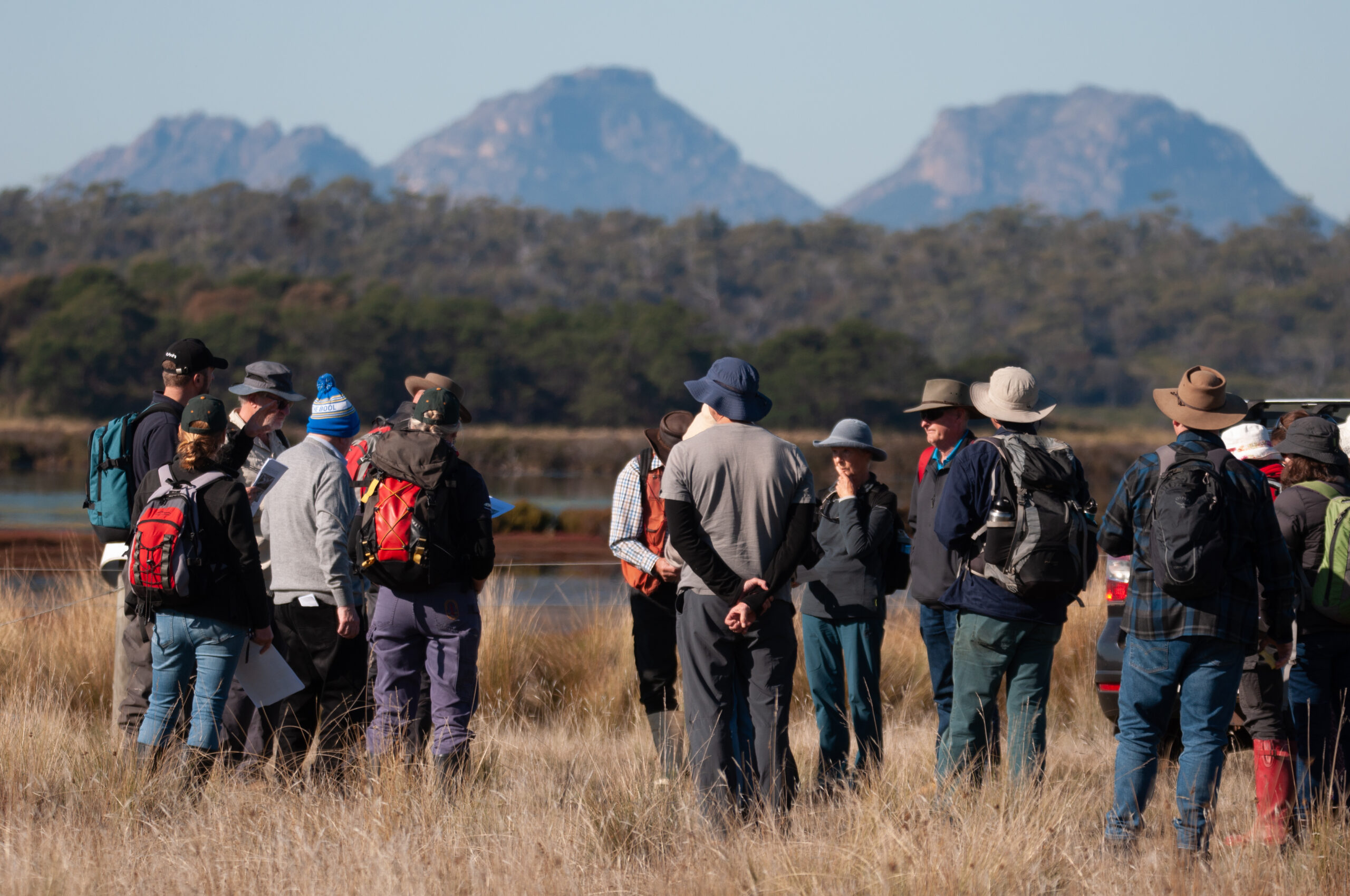MEDIA RELEASE
Natural Resource Management South are working to build back biodiversity at two internationally important wetlands on Tasmania’s east coast through improved monitoring and management practices, reducing threats to the wetland and restoring its natural flows.
Moulting Lagoon and Apsley Marshes are Ramsar-listed wetlands that are recognized for their rich diversity of plants (including threatened saltmarsh) and as important habitat for waterbirds and fish.
With the project wrapping up at the end of June, and to celebrate the culmination of the past three years’ efforts, NRM South joined project partners and stakeholders for a field day in early May to showcase the completed works.
One of the outcomes on display as part of this Australian Government funded project, was the nine hectares of modified drainage that has been restored by project partner Nature Glenelg Trust (NGT) over the past year.
NGT has worked on similar projects across southern Australia and NGT’s Mark Bachmann noted that restoring natural water flows in modified wetlands will help the threatened saltmarsh community re-establish and improve the overall health of the system.
‘Historical modifications to these wetlands, such as the construction of levee banks and drainage channels, had changed the way water moved through the landscape,’ Mark explained. ‘This was having negative impacts on saltmarsh health, including the plants and animals that rely on this habitat. We have been grateful to the local community who have provided us with insights into how the wetland looked in the past, which helped us plan the restoration works and has resulted in the return of natural flows to this significant area for the first time.’
Across the wetlands, 114 hectares of saltmarsh habitat is now being positively influenced by the hydrological restoration works, well in excess of the project target of 64 hectares.
Field day attendees also checked on some saltmarsh species plantings that have been carried out by the Tasmanian Land Conservancy (TLC) to assist natural regeneration and learned more about the camera trapping that TLC and the Tasmanian Aboriginal Centre has been doing to monitor wildlife – including feral species.
NRM South’s Laurel McGinnity, who has been leading the project, was delighted by both the success of the field day as well as the overall support she has seen from local landholders, project partners, committee members, contractors, consultants and community members.
‘This work could not have been completed without their input and support,’ she emphasized. ‘Although this project is wrapping up soon, these wetlands are a priority for funding and investment under the Southern Tasmanian Regional Strategy. We hope to continue working with key stakeholders to build on the significant achievements that have been completed over the past three years.’
This project is supported by NRM South through funding from the Australian Government’s National Landcare Program.
-ENDS-
